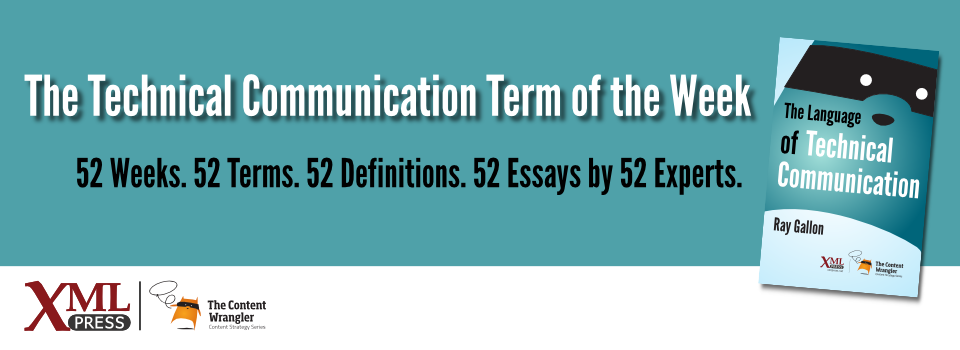What is it?
The practice of using content components in multiple information products.
Why is it important?
Developing reusable content that can be used in multiple places and output formats saves valuable resources, enforces consistency, and improves content quality and effectiveness.
Why does a technical communicator need to know this?
Content reuse is a key tactical component of a content strategy. Efficient content reuse enables single sourcing and multi-channel publishing; enforces editorial consistency; conserves time and fiscal resources; and can help ensure accurate, compliant (and thus effective) content.
Efficient content reuse does not involve copy-and-pasting; instead it uses transclusion, whereby content is authored in one location and used by reference in other locations. Many Extensible Markup Language (XML) architectures implement transclusion; perhaps the most well-known is the Darwin Information Typing Architecture (DITA). Many authoring systems and content management systems also include proprietary mechanisms for transclusion.
Companies can maximize content reuse by developing structured content that is standards-based and semantically rich. Content can be reused at different levels of granularity:
- An entire information product
- An entire topic or collections of topics
- Elements of a topic
In addition, content can be designed so that conditional processing (filtering) can generate different variants of information products. A content analysis can determine the appropriate level of granularity. A reuse strategy should define the method of content reuse, what content should be reused, the granularity of reuse, how reused content is controlled, and who owns reused content.
You can effectively manage reused content by employing a content management system (CMS) to control access, determine where the controlled content is used, and identify potentially reusable content. When content is structured well, content managers can employ automation to power content reuse, for example by pre-populating information products with reused content or using tools such as Schematron to help prevent content authors from accidentally deleting the controlled content.

